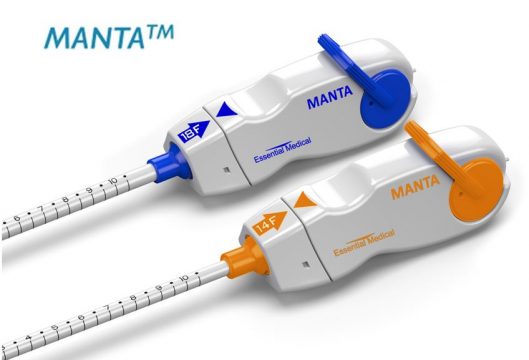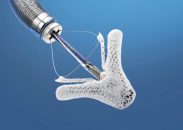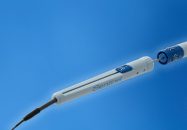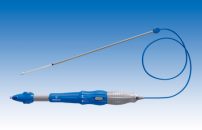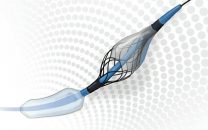Courtesy of Dr. Agustín Vecchia. The number of transcatheter aortic valve replacements (TAVR) and the placement of aortic endoprosthesis and ventricular assist devices, among others, have grown exponentially worldwide in the last few years. In a short time, many of these procedures will surely become the new standard of care. Logically, this growth comes hand in hand…
Percutaneous Mitral Annuloplasty: First Results in Humans
Courtesy of Dr. Agustín Vecchia. In the last few years, new percutaneous treatment options for mitral regurgitation have emerged. Transcatheter mitral annuloplasty with various devices is a relatively simple procedure that could compress the origin of circumflex artery branches due to the different orientation of mitral corners and the coronary sinus. The following work by Park…
TAVI Frailty Indices: We Should Start Using Them
Courtesy of Dr. Carlos Fava. Frailty should be taken into account when deciding transcatheter aortic valve implantation (TAVI). Even though several scales of frailty are available, they are yet to be tested in this group, with this strategy. The study analyzed 101 patients, frailty was assessed clinically according to the following tests: Katz index…
Pacing with a 0.035” Guidewire, an Old Technique Coming Back to Simplify TAVR
This study seeks to prove the safety and efficacy of rapid left ventricular pacing through a 0.035” guidewire during aortic valvuloplasty and transcatheter aortic valve replacement (TAVR). Right ventricular temporary pacing placed through venous access during aortic valvuloplasty or during TAVR is time-consuming and, above all, associated with cardiac perforation and tamponade. Since…
MitraClip: Impact of Sinus Rhythm and Heart Rate
Courtesy of Dr. Carlos Fava. Atrial fibrillation (AF) and fast heart rate (>70 lpm) have been shown to increase the risk of mitral valve repair surgery. The MitraClip has shown benefits in high risk patients, but its relation to abnormal heart rhythm has not yet been established. 760 patients were analyzed; 315 (52.4%) presented…
Cerebral Protection in TAVR: Does It Improve Cognitive Function?
Neurological complications during transcatheter aortic valve replacement (TAVR) may be reduced with cerebral protection devices; this study was designed to explore that hypothesis. The study enrolled 363 patients undergoing TAVR in 19 sites and divided them in three arms: a safety arm (n = 123), a device imaging arm (n = 121), and a non-device imaging arm (n = 119). The…
Meta-analysis on Cerebral Embolic Protection in TAVR
Cerebral embolic protection is a strategy to prevent embolization of thrombotic or calcific debris during transcatheter aortic valve replacement (TAVR). A number of randomized and controlled studies have tested the safety and efficacy of various devices, though none of them have enough statistical power to show significant differences in end points. While preliminary…
Evolut R: Clinical Results Might Be Better than Those for First-Generation CoreValve
Two recent articles featured in JACC Cardiovascular Interventions showed that short term (at 30 days) outcomes of patients treated with the next-generation self-expanding Medtronic Evolut R valves could present several advantages compared to the original CoreValve, including recapturability. Both analyses reported similar rates of all-cause mortality and stroke. The study carried out by Dr. Jeffrey Popma as…
Post-Dilation of Self-Expanding Valves: Frequency, Usefulness, and Risks
This study explores the impact of balloon post-dilation on studies conducted in the United States assessing the CoreValve self-expandable valve. Procedural details of 3532 patients were examined to determine whether post-dilation was performed after valve implantation. Best practice guidelines recommend post-dilation to improve suboptimal outcomes, being the most frequent alternative for treating moderate or severe…
Asymptomatic Severe Aortic Stenosis in the Elderly: When to Intervene
This work studies the natural history of aortic stenosis and the optimal timing to intervene elderly patients with asymptomatic severe aortic stenosis. This disease is increasingly misdiagnosed in the elderly population, and this goes hand in hand with enhanced therapeutic options. Prior studies on the natural history of this disease were made on…
TAVR: Reasons to Consider Mitral Annular Calcification
Courtesy of Dr. Carlos Fava. Aortic valve calcification and mitral annular calcification have the same etiology and are frequently present in high-risk patients undergoing transcatheter aortic valve replacement (TAVR). The implications of mitral annular calcification for patients undergoing TAVR has not been entirely clarified yet. The study examined 782 patients with severe aortic stenosis who underwent…
